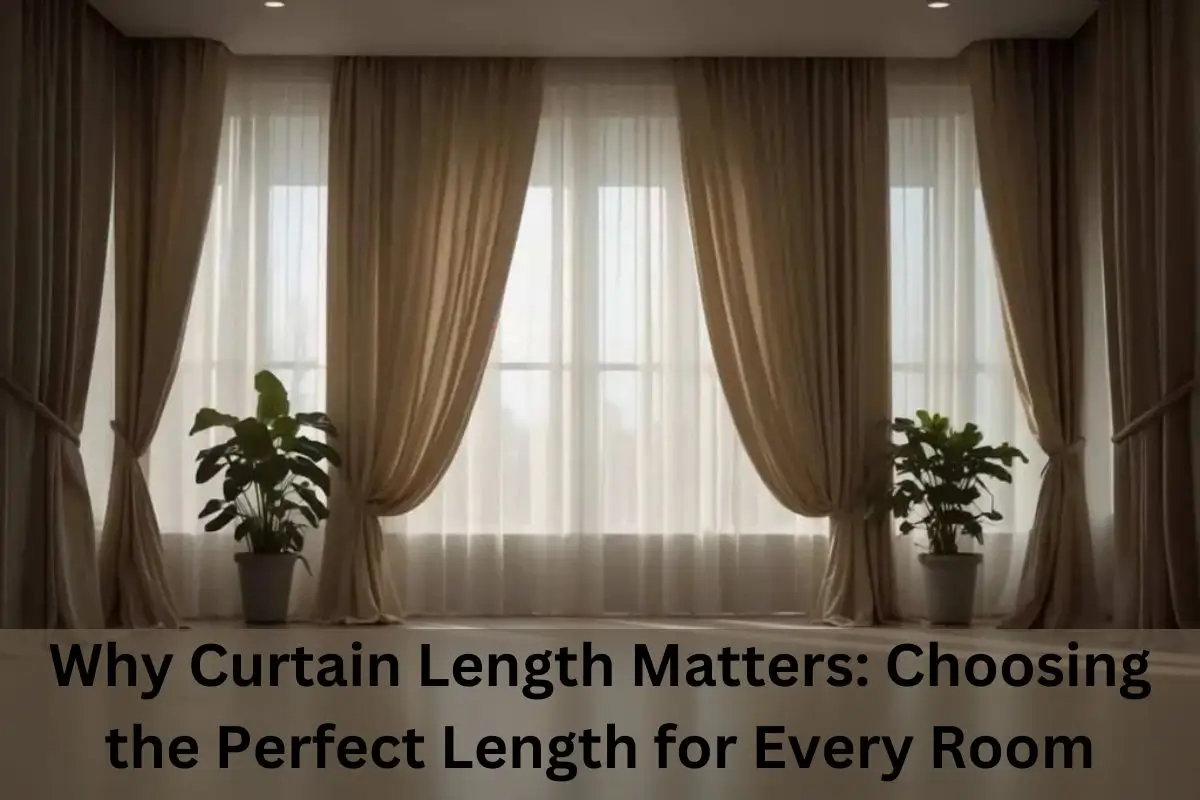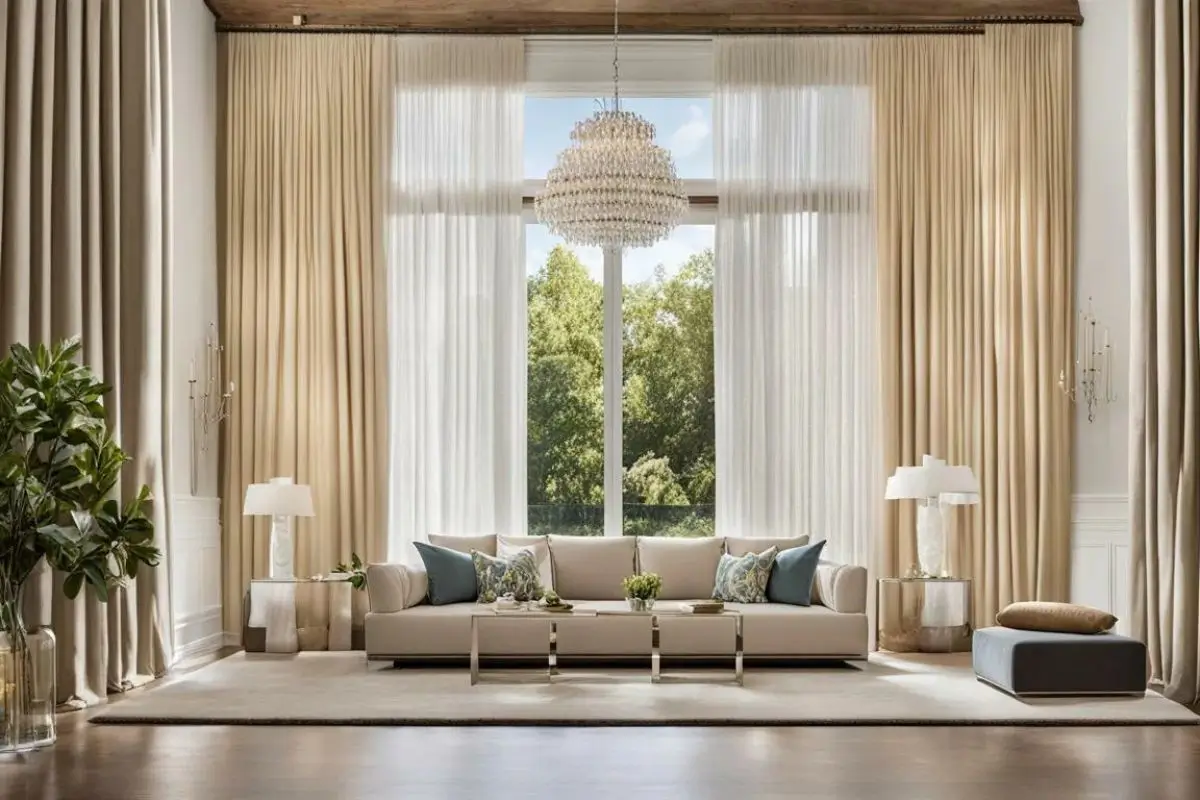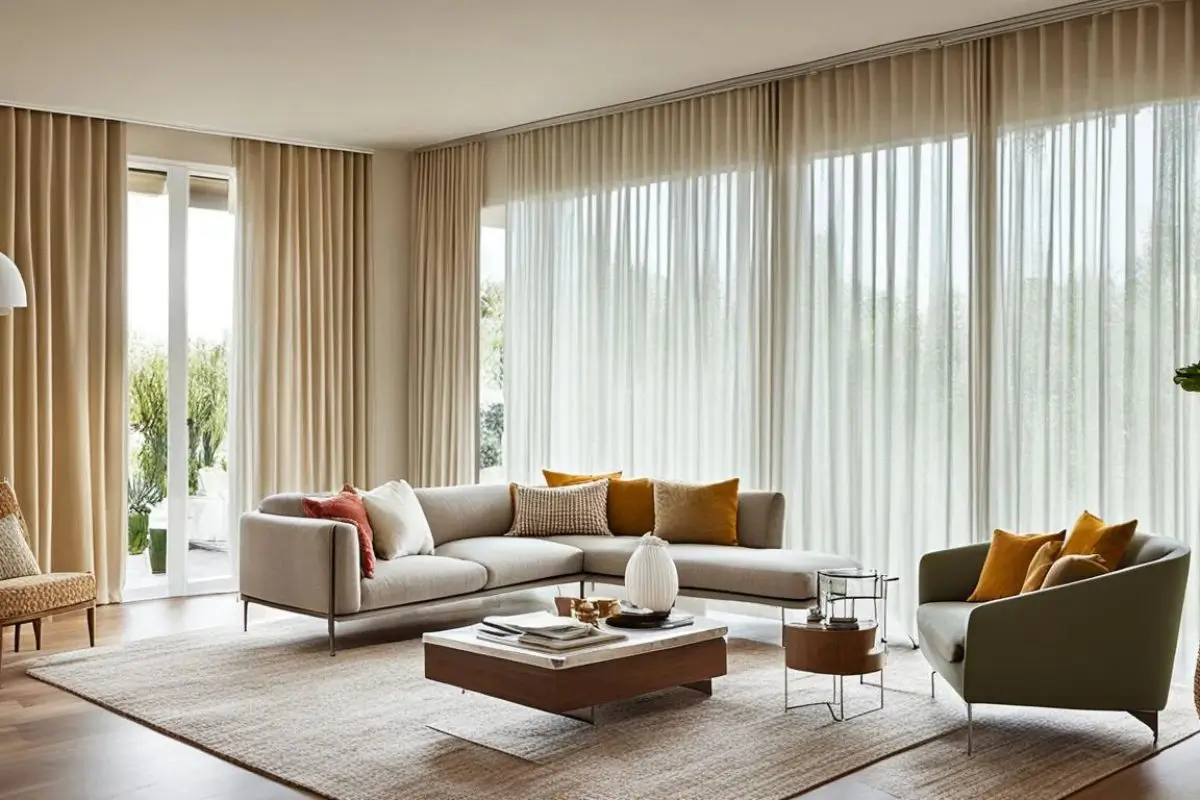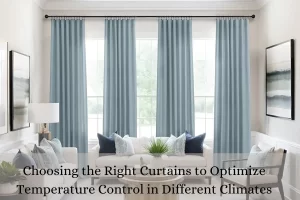Curtain length is more than a decorative choice—it plays a pivotal role in determining the look, feel, and functionality of any room. Whether you’re aiming for a polished, formal look or a practical, casual ambiance, choosing the right curtain length can make all the difference. This comprehensive guide covers everything from the impact of different curtain lengths on aesthetics to room-specific recommendations and common mistakes to avoid.
Elevate Room Aesthetics with the Right Curtain Length
Curtain length significantly affects a room’s overall look. Long curtains create an illusion of taller ceilings, making small spaces appear more expansive and sophisticated. On the other hand, shorter curtains provide a more casual or functional look, especially in rooms like kitchens or bathrooms. Understanding how different lengths impact the visual balance helps achieve a cohesive design. By matching curtain length to the room’s proportions and decor, you ensure harmony and avoid visual disruptions that can make the space feel unbalanced or unfinished.
Exploring Common Curtain Lengths and Their Ideal Uses
Understanding the variety of curtain lengths and their best applications helps you make informed decisions:
- Floor-Length Curtains: Perfect for living rooms and bedrooms, offering a sophisticated touch.
- Puddle-Length Curtains: Exude luxury and are great for formal spaces like dining rooms.
- Apron-Length Curtains: End just below the window sill, making them ideal for kitchens and casual areas.
- Sill-Length Curtains: Best suited for smaller windows in bathrooms or utility rooms.
Each length serves a unique purpose and adds specific visual and functional qualities to a room.
Functional Benefits of Choosing the Right Length
Curtain length influences not just appearance but practicality. Shorter curtains, such as apron or sill-length, are simpler to clean and manage in high-traffic or spill-prone areas like kitchens. In contrast, long curtains might be harder to maintain, especially if they collect dust or pet hair. For households with pets or young children, shorter curtains reduce the risk of damage or accidents. Long curtains can be elegant but may pose challenges when opening or closing frequently. Choosing the appropriate length enhances both functionality and safety.
Room-Specific Curtain Length Recommendations
Selecting curtain length according to the room’s function is crucial:
- Living Rooms: Opt for floor-length or puddle-length curtains to create a polished, upscale look.
- Bedrooms: Choose floor-length curtains to enhance privacy and establish a cozy atmosphere.
- Kitchens and Bathrooms: Go with sill or apron-length curtains to avoid moisture issues and simplify cleaning.
- Home Offices: Tailored, practical lengths that don’t distract ensure a professional environment.
Adapting the curtain length based on room use ensures an optimal blend of beauty and utility.
Aligning Curtain Length with Design and Style
Curtain length should match the overall interior design style:
- Modern Designs: Feature floor-length curtains for a sleek, minimalist appearance.
- Traditional Styles: Utilize puddle-length curtains for an opulent touch. Layering curtains of different lengths, such as combining long drapes with shorter sheers or valances, adds depth and sophistication. By coordinating curtain length with the room’s design theme, you create a space that feels cohesive and visually appealing.
Accurate Measuring and Installation Tips for Perfect Fit
Proper measurement is crucial for achieving the desired curtain length:
- Measure from the curtain rod to the preferred end point, whether just above the floor for floor-length or slightly below the window sill for apron-length curtains.
- For an elegant look, position the curtain rod 4-6 inches above the window frame to create an illusion of taller ceilings.
- For puddle-length curtains, add an extra 2-4 inches to achieve a luxurious drape on the floor.
Accurate measurement and installation help you achieve a professional, polished finish that enhances your space.
Common Mistakes to Avoid for the Best Results
Avoiding common mistakes ensures your curtains enhance rather than detract from your room’s design:
- Hanging Curtains Too Short: Creates a “flood” look that makes the room appear disjointed and incomplete.
- Using Puddle-Length Curtains in High-Traffic Areas: Can be impractical, collecting dust and becoming tripping hazards.
- Inaccurate Measurements: Result in curtains that don’t fit properly, leading to additional expenses or alterations.
By being aware of these common pitfalls, you can choose curtains that elevate your room’s aesthetic.
Seasonal Adjustments for Curtain Length
Changing curtain length with the seasons can optimize comfort and style:
- Summer: Use shorter, lighter curtains for better air circulation and more natural light.
- Winter: Opt for longer, thicker curtains to insulate rooms and retain heat, improving energy efficiency.
Seasonal adjustments provide both functional and visual benefits, making your home adaptable and comfortable throughout the year.
Conclusion
Make Curtain Length Work for You Choosing the right curtain length is essential for achieving both aesthetic appeal and functional value. Understanding how different lengths impact each room, measuring accurately, and avoiding common mistakes are all crucial steps. By tailoring your choice to your space’s specific needs and considering seasonal changes, you create a well-rounded, visually appealing home that feels both elegant and practical.




